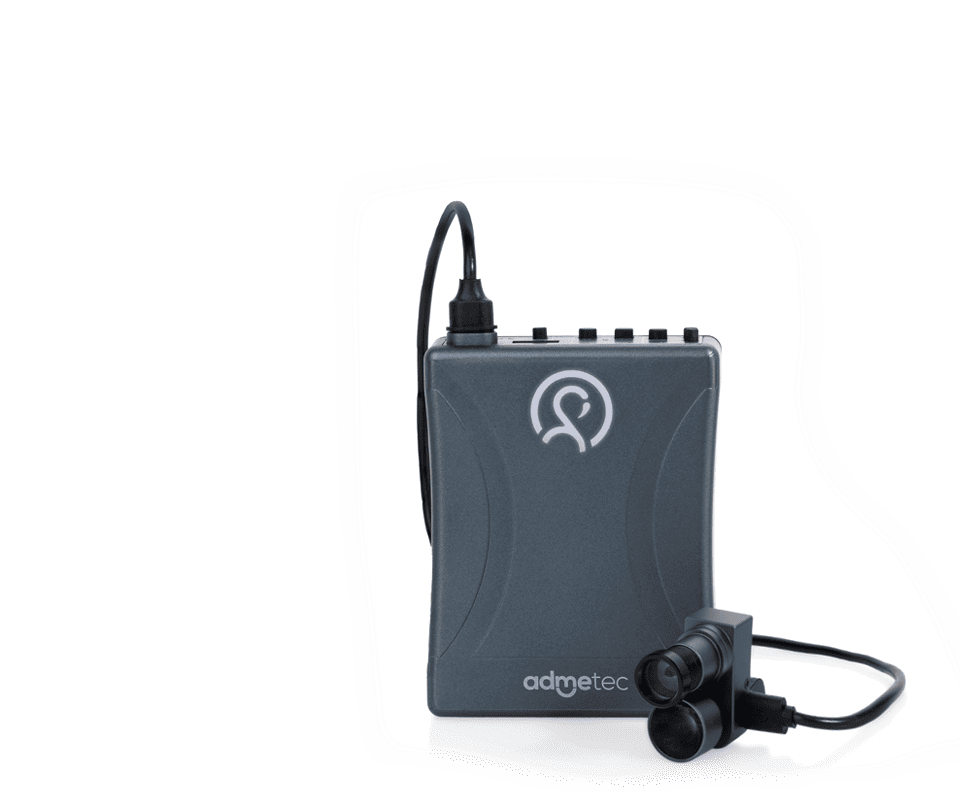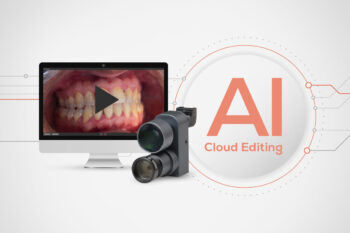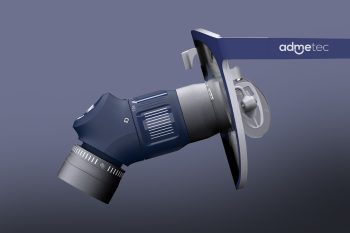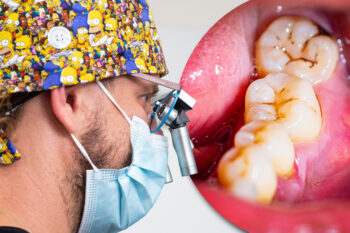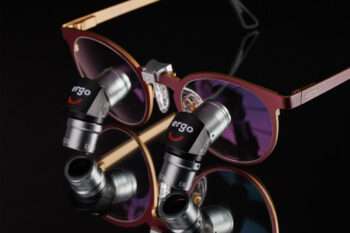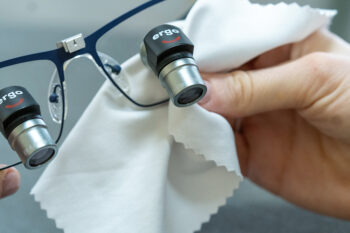Dott.ssa Anikó Ball, laureata in Scienze odontoiatriche (Melbourne), diplomata in Ipnosi clinica, diplomata avanzata in Studi Alexander, fondatrice di Optimum Dental Posture.
Le lenti di ingrandimento rifrattive sono sul mercato da diversi anni. Dopo un’accettazione un po’ cauta di questa nuova tecnologia, stanno diventando sempre più il punto di riferimento per i dentisti che vogliono stare seduti in una posizione corretta, che potrebbe davvero allungare la loro carriera (anche se servono più ricerche per confermare questa idea).
La maggior parte dei dentisti usa lenti di ingrandimento, che ci aiutano un sacco nella diagnosi e nel trattamento. Purtroppo, non c’è stata molta formazione su come usarle bene o su come sceglierle. Ho studiato le lenti per anni dopo aver visto che la maggior parte dei dentisti che partecipavano ai miei workshop “Ergonomia e benessere in odontoiatria” usavano lenti TTL (through the lens) con angoli di declinazione non adeguati, che costringevano a piegamenti dannosi della colonna vertebrale.
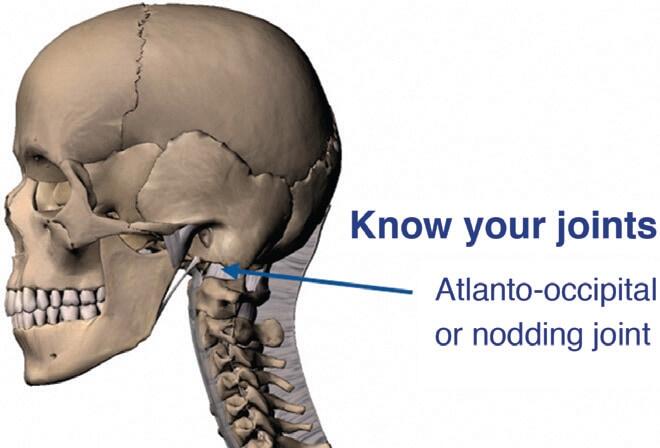
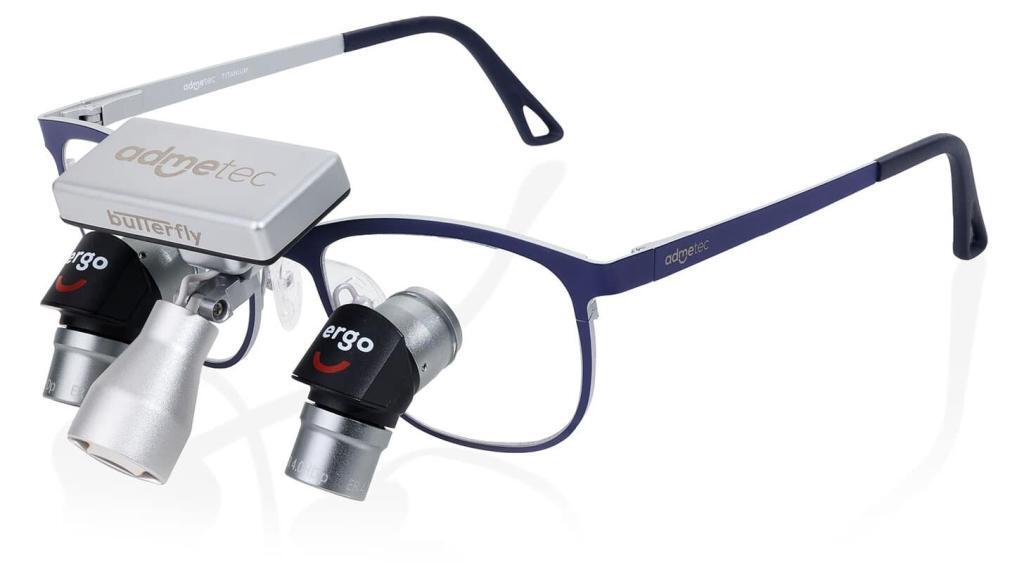
Principi di progettazione biomeccanica che ogni dentista dovrebbe conoscere
La testa è collegata alla colonna vertebrale all’altezza dell’articolazione atlanto-occipitale o articolazione del cenno (all’altezza delle orecchie). Un’asta immaginaria che passa attraverso le orecchie costituisce l’asse di rotazione della testa. Questa articolazione è progettata per consentire il movimento verso l’alto e verso il basso.
NOTA: La testa può muoversi solo di 10° per guardare verso il basso dalla parte superiore della colonna vertebrale! Qualsiasi inclinazione maggiore della testa coinvolge altre articolazioni cervicali.
La giuntura successiva è quella atlanto-assiale, C1 e C2, che serve per girare la testa a destra e a sinistra. Tutte le giunture tra le vertebre sotto la C2 sono giunture scorrevoli o piane, che non sono fatte per piegarsi o torcersi, soprattutto per tanto tempo come facciamo noi dentisti.
Piegare e torcere le giunture della colonna in modo che non va bene per la biomeccanica aumenta il rischio di problemi muscoloscheletrici e dolori cronici sul lavoro.
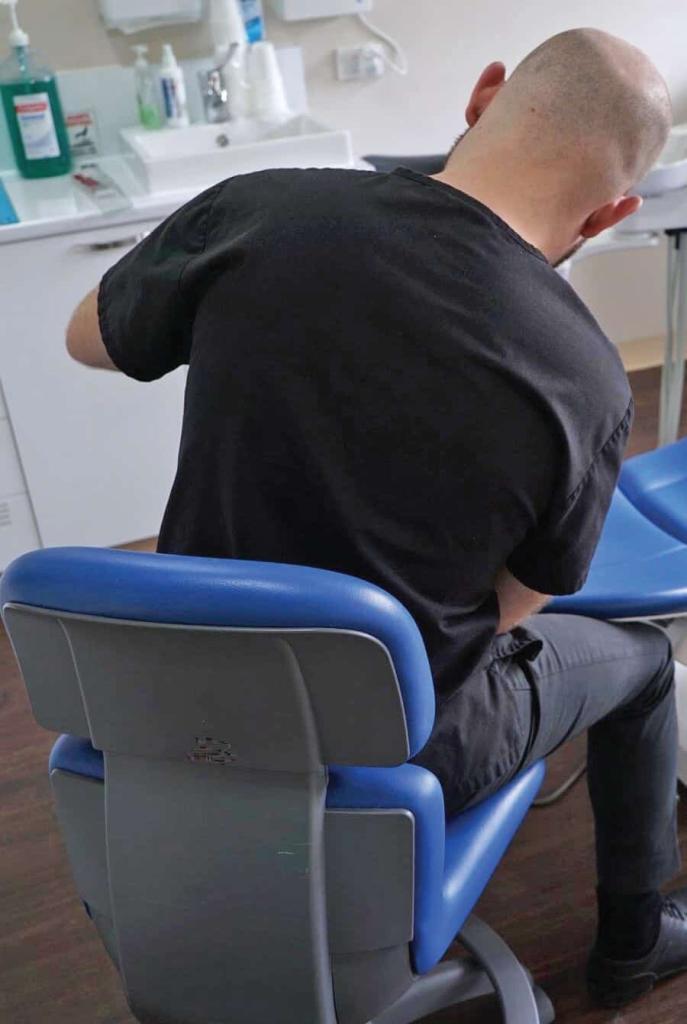
Perché consiglio le lenti di ingrandimento rifrattive
Le lenti di ingrandimento rifrattive sono fantastiche! Permettono ai dentisti di stare seduti dritti, guardare avanti e vedere dentro la bocca dei pazienti senza dover piegare il collo in modo dannoso.
Il rapporto “ideale” tra testa e collo. Questo porta a una contrazione cronica dei muscoli del collo e a una compressione della colonna vertebrale. La testa è progettata per stare in cima alla colonna vertebrale all’altezza dell’articolazione atlanto-occipitale con una leggera rotazione in avanti, perché la parte anteriore della testa è più pesante di quella posteriore; il suo centro di massa è davanti alla sua base di appoggio.
Questo porta all’attivazione dei recettori di stiramento nei muscoli posturali profondi della parte posteriore del collo, che a loro volta attivano il sistema di supporto muscolare antigravitazionale.
Posizione della testa con il mento sollevato
Ho visto dentisti usare lenti di ingrandimento rifrattive (le stesse che si usano con i microscopi) con un leggero sollevamento del mento, credendo che fosse la posizione “ideale” della testa rispetto al collo. Questo porta a una contrazione cronica dei muscoli del collo e alla compressione della colonna vertebrale.
La testa è progettata per poggiare sulla colonna vertebrale all’altezza dell’articolazione atlanto-occipitale con una leggerissima rotazione in avanti, perché la parte anteriore della testa è più pesante di quella posteriore; il suo centro di massa è davanti alla sua base di appoggio.
Questo fa sì che si attivino i recettori di stiramento nei muscoli posturali profondi nella parte posteriore del collo, che a loro volta attivano il sistema di supporto muscolare antigravitazionale.
Inclinarsi di lato
Alcuni dentisti continuano a inclinarsi di lato invece di chiedere ai loro pazienti di girare la testa di lato o di spostare lo sgabello intorno alla poltrona. La colonna vertebrale non è fatta per piegamenti laterali prolungati o ripetuti.
Lunga distanza di lavoro
Se la distanza di lavoro è troppo lunga, la poltrona del paziente è posizionata troppo in basso, con il risultato che le gambe del dentista rimangono bloccate. Ho visto alcuni dentisti costretti a sedersi sulla metà anteriore dello sgabello dentistico cercando di infilare le gambe sotto la poltrona! Essere bloccati in una posizione del genere incoraggia l’inclinazione laterale.
Riepilogo
Per riassumere, le lenti di ingrandimento rifrattive possono essere una svolta per ogni dentista o chirurgo che si preoccupa della propria postura e vuole evitare danni muscoloscheletrici a lungo termine. Come ogni tecnologia, va usata con attenzione. Prenditi cura di te stesso, sei il tuo strumento più prezioso!
NOTA: non ho alcun coinvolgimento finanziario con alcuna azienda dentale. Sono un sostenitore del benessere dei miei colleghi.
Per saperne di più www.optimumdentalposture.com
Pubblicato originariamente da www.dentalpractice.com.au








